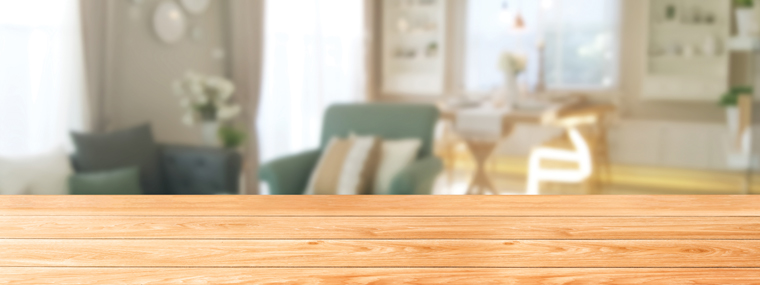
Association v. Unit Owner Property in an Insured Loss
Blurred Lines
By Amy D. Boggs, Esq. / Published December 2019

It all seems so very simple: the HOA/COA takes care of maintaining and insuring association property, and unit owners take care of maintaining and insuring unit owner property. Why does it get so complicated when we throw insurance into the mix? Because determining who is required to insure and repair association and unit owner property in an insured loss involves complicated interplay between Florida law, the insurance policy, and the association agreement and bylaws.
Generally speaking, unit owner property includes everything inside the unit from the wall and floor finishes inward, and association property includes everything else. The typical association bylaws, agreement, and declarations (the “association agreement”) call for the association to maintain all common areas and limited common areas. The common areas include property that is used by all unit owners, like hallways, the elevator, pool, or clubhouse. Limited common areas include property that is exclusively used by one owner but is owned by the association: balconies and HVAC equipment outside of the unit, for example. When it comes to routine maintenance, therefore, the boundaries are clear.
When it comes to insuring and repairing association property after an insured loss, however, the lines get blurred. The obligation to maintain property may be different than the obligation to repair property in the event of an insured loss. The association insurance policy typically states that it covers damage to the building. It also covers some property within the units: appliances, fixtures, improvements, alterations that are part of the building—regardless of ownership—if the association agreement requires the association to insure that property. The coverage provided by the association’s policy is, therefore, dependent on the association agreement.
The board and its insurance agent should read and understand what the association is obligated to insure when it purchases the insurance policy. This is critical to understanding what the policy covers and, in turn, how much insurance is needed to cover that property. Under Fla. Stat. section 718.111(11)(a), an association must provide adequate property insurance for the replacement cost of the insured property as determined by an independent insurance appraisal or update of a prior appraisal, which is to be determined every 36 months.
After determining what is insured, the second consideration is what are the association’s repair obligations in the event of an insured loss. In the aftermath of Hurricane Wilma in 2005, the Florida legislature made several changes to Fla. Stat. section 718.111(11) of the Florida Condominium Act to help ensure consistency in residential insurance coverage to condominiums and unit owners.
If the cause of damage to the condominium results from a casualty event that is covered by the condominium association’s policy of insurance, then Fla. Stat. section 718.111 applies. If the cause of damage is not the result of an insured event, then the condominium’s repair and maintenance provisions within the association agreement control. Fla. Stat. section 718.111 provides that after an insured property loss, the association is required to cover the cost for the following:
- All portions of the condominium property as originally installed or replacement of like kind and quality, in accordance with the original plans and specifications; and
- All alterations or additions made to the condominium property or association property pursuant to Fla. Stat. §718.113(2).
The repairs, therefore, include all interior drywall (unfinished), windows, exterior doors, common areas on the grounds, and anything that an individual unit owner is not obligated to repair under the statute.
Consider what happens, however, when the association has to remove or damage otherwise undamaged unit owner property in order to repair association property. Suppose the building is hit by a hurricane that causes water damage to the exterior walls and sub-floors of units, among other things. The walls and sub-floors are clearly association property, and the association will need to remove the floor and wall finish in order to effect repairs. Most association agreements will specify that the association is responsible for repairing unit owner property if the property is damaged in the course of the repair of association property. That means that the association’s insurance needs to pay for the cost to remove the unit owner’s wall and floor finishes and put them back as they were before the association damaged them. That would include painting the interior walls that were removed and replaced.
More often than not in this situation, however, the wall coverings, like cabinets, are not made to be removed and reset, and the floor covering, tile for example, cannot be put back once it is removed. As such, someone needs to pay for the replacement of the wall and/or floor finish. Even though the cabinets and floor coverings are generally the unit owner’s responsibility to maintain and repair, in this instance the association would be responsible for replacing the wall and floor coverings because they were damaged in the course of association repairs. The association’s insurance policy, therefore, should cover this cost.
Note, however, that if the unit owner’s property was already damaged from the hurricane before the association removed it, then the unit owner is responsible for replacing the damaged cabinets or floor finish. In that instance, there is an overlap in responsibility. The association is responsible for removing and resetting the floor covering and cabinets; and the unit owner’s insurance is responsible for removing and replacing those same items (i.e., buying new cabinets and flooring). The overlap is in the removal and cost of re-setting the items. That overlap will need to be worked out between the association and the unit owner and their insurance companies. The cost should be fully covered by the insurance policies covering the unit and the association.
Given the complexities of the bylaws and the statute, and the interplay between the association’s policy and unit owners’ policies, it is important that a condominium association and/or property manager contact an attorney as soon as a casualty event occurs to the insured property. This will protect the board and make sure that it is complying with Fla. Stat. §718.111(11), and that it is advocating for all possible coverages available to the association in the event of a loss.
Amy Boggs
Attorney, Boggs Law Group
Amy Boggs is an attorney who specializes in representing Florida policyholders in property insurance disputes. She has represented numerous COA and HOA boards and understands the complexities these clients face. Amy graduated summa cum laude as the Salutatorian of Stetson College of Law’s class of 2000. She had the distinguished honor of practicing at Carlton Fields and the Merlin Law Group before founding The Law Office of Amy Boggs in 2010, now Boggs Law Group. Amy is featured in local media for insurance issues and teaches CLE classes to colleagues.
For more information, visit boggslawgroup.com.




